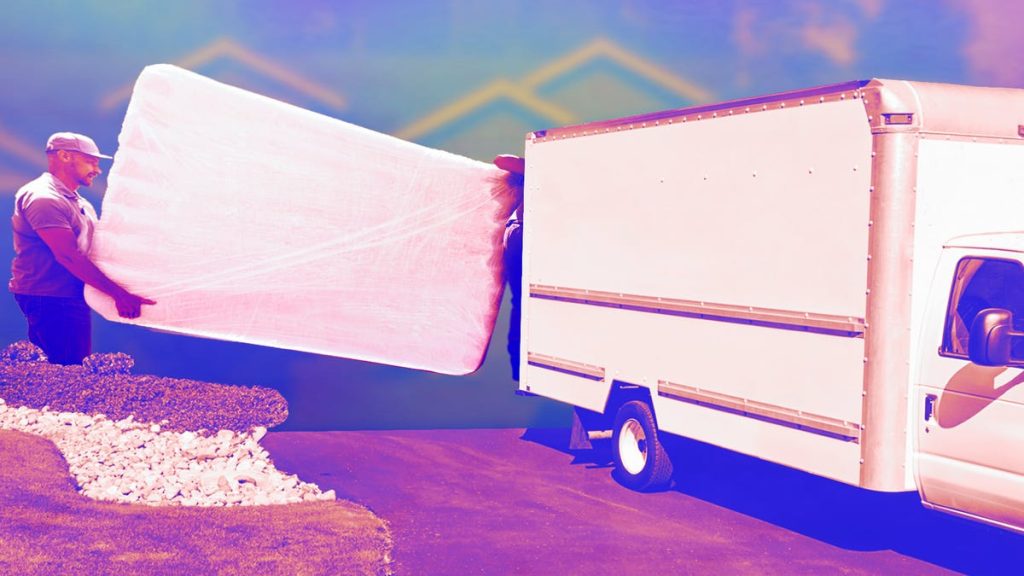Disposing of an old mattress can be a cumbersome task, especially when living in limited space. Often, the easiest solution appears to be discarding it on the curb for bulk pickup. However, this approach often leads to mattresses ending up in landfills, which is environmentally detrimental. Many mattresses, especially those relatively new and well-maintained, can be repurposed, offering a sustainable alternative to disposal. This piece explores the journey of finding a new home for a gently used Casper mattress and highlights the valuable work of organizations dedicated to facilitating furniture reuse.
The author’s quest began with the desire to avoid contributing to landfill waste. Despite the mattress being in excellent condition, initial attempts to find takers among friends, family, and online marketplaces proved unsuccessful. This experience underscores the common challenge of rehoming bulky items, even when free for the taking. Traditional donation avenues, like Goodwill, often reject used mattresses due to hygiene regulations, further complicating the disposal process. The option of transporting the mattress to a distant drop-off location added another layer of logistical difficulty. This highlights the need for readily accessible and convenient donation options for large household items.
Research eventually led the author to Beds for Kids, a Charlotte, North Carolina-based non-profit that specializes in providing essential furniture, including beds, to families in need. This organization not only accepts mattress donations but also offers a convenient pick-up service, eliminating the transportation hurdle. Beds for Kids serves as a valuable resource, diverting thousands of mattresses annually from landfills and placing them in homes where they are genuinely needed. Their partnership with local businesses and universities, such as Ashley Homestore and UNC Charlotte, creates a sustainable cycle of furniture reuse within the community.
The donation process with Beds for Kids proved remarkably smooth. After submitting an online inquiry and providing photographs of the mattress for condition verification, a pick-up time was scheduled. For a nominal fee, the mattress was efficiently removed, saving the donor time and effort. The organization’s meticulous process ensures that donated mattresses meet specific quality standards before being distributed. All mattresses undergo a thorough cleaning and sanitization process to eliminate any potential hygiene concerns, such as bed bugs. This attention to detail safeguards the health and well-being of the recipient families.
The success story of Beds for Kids underscores the significant impact that local non-profits can have on both environmental sustainability and community well-being. In 2023 alone, the organization facilitated over 1,000 furniture deliveries, serving nearly 4,000 individuals. Their model of partnering with businesses, universities, and individual donors creates a powerful network for resource redistribution, maximizing the lifespan of valuable household items and supporting families in need. This initiative exemplifies the potential for creating a circular economy within communities, reducing waste and providing essential resources to those who lack them.
While donating to a specialized organization like Beds for Kids is an ideal solution, it may not always be feasible depending on location and available resources. Therefore, exploring alternative options for mattress disposal remains crucial. These options range from municipal bulk pickup services, which may or may not divert mattresses from landfills, to exploring donation possibilities with select Goodwill or Habitat for Humanity locations. Additionally, connecting with friends, family, or utilizing online buy-and-sell platforms can facilitate mattress rehoming within personal networks. Some mattress brands also offer removal services when purchasing a new mattress, while specialized recycling services like A Bedder World provide a dedicated channel for environmentally responsible disposal.
Ultimately, the goal should be to minimize mattress waste and prioritize reuse or recycling whenever possible. Even mattresses deemed unsuitable for donation often contain recyclable components, such as foam, steel coils, and fibers. By actively seeking out responsible disposal methods and supporting organizations that promote furniture reuse, we can collectively reduce the environmental burden of discarded mattresses and contribute to a more sustainable future. The experience of donating a mattress to Beds for Kids serves as an inspiring example of how thoughtful disposal can benefit both the environment and those in need. It emphasizes the importance of exploring all available options before resorting to landfill disposal, transforming a potentially cumbersome task into a positive act of community support and environmental stewardship.

